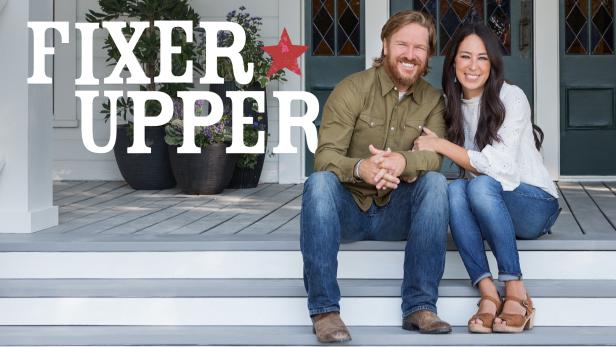Fixer-Upper Properties: The Complete Guide for Homebuyers and Investors

Introduction to Fixer-Upper Properties
A fixer-upper is a property that requires repairs or renovations before it can be considered livable or profitable. These properties are often sold at a lower price than move-in ready homes, making them attractive to buyers with a vision for improvement. Whether you’re a first-time homebuyer or an experienced investor, fixer-uppers offer unique opportunities to create your dream home or make a profitable investment.
Why are fixer-uppers so popular? The appeal lies in their potential. With the right vision and strategy, a fixer-upper can be transformed into a beautiful and valuable property. In this article, we’ll take a closer look at what https://realestatetips.us/ are, the advantages and challenges of buying one, and how to navigate the renovation process.
Key Characteristics of Fixer-Upper Properties
Condition of the Property: Fixer-uppers can range from properties that need minor cosmetic changes to those requiring extensive repairs. The condition often includes outdated features, damaged structures, or systems that need replacement (e.g., plumbing, electrical wiring, roofing). Buyers must assess how much work the property needs and whether they’re willing to tackle the challenges.
Potential for Renovation and Improvement: One of the main attractions of a fixer-upper is the potential for improvement. A well-chosen fixer-upper can be renovated to enhance its value, making it a worthwhile investment. Homebuyers or investors need to consider the extent to which the property can be upgraded.
Cost Considerations: While fixer-uppers are priced lower than move-in ready homes, the cost of renovations can quickly add up. Buyers need to weigh the upfront savings against the potential renovation expenses. Budgeting and getting accurate estimates is crucial before diving in.
The Pros of Buying a Fixer-Upper
Lower Purchase Price: One of the biggest draws of a fixer-upper is its lower initial cost. These properties are typically priced below market value, allowing buyers to purchase a home in a desirable neighborhood that they may not be able to afford otherwise.
Potential for High Return on Investment (ROI): After renovations, a fixer-upper can significantly increase in value, offering the potential for a high ROI. For investors, the goal is to buy low, renovate, and sell high. Homebuyers may also benefit from increased equity after making improvements.
Customization Opportunities: When you buy a fixer-upper, you have the freedom to make the property your own. You can customize it to fit your style, from choosing the flooring and cabinetry to deciding on the layout and design. This level of personalization is often not available with a move-in ready home.
The Cons of Buying a Fixer-Upper
Unexpected Costs and Delays: Renovations rarely go as planned. Hidden issues, such as structural problems or outdated systems, can surface during the renovation process, leading to unexpected costs and delays. It’s essential to have a contingency budget for these surprises.
Extensive Renovation Time: Fixing up a property takes time. Depending on the extent of the work, renovations can last anywhere from a few months to over a year. Buyers must be prepared for the time commitment required and be patient with the process.
Risk of Overestimating the Property’s Potential: It’s easy to fall in love with the idea of a fixer-upper, but not every property has the potential to become a dream home. Some properties may have insurmountable issues that are not worth the cost and effort of renovation.
How to Assess a Fixer-Upper Property
Before purchasing a fixer-upper, it’s crucial to assess the property thoroughly:
Inspection: What to Look For: A professional inspection is a must. Inspectors will look for hidden issues like mold, water damage, foundation problems, or plumbing and electrical concerns. This will give you a clear picture of what needs to be fixed.
Understanding the Scope of Work Required: It’s essential to understand the extent of renovations needed before making an offer. You may need to bring in contractors or architects to get a better sense of what’s required.
Estimating Renovation Costs: Use estimates from contractors and local professionals to determine how much the renovation will cost. Be sure to factor in costs for permits, labor, and materials.
Financing a Fixer-Upper
Traditional Mortgages vs. Renovation Loans: When financing a fixer-upper, buyers can opt for traditional mortgages or specialized renovation loans (like the FHA 203(k) loan). Renovation loans allow borrowers to roll the cost of the repairs into the mortgage, making them a good option for those with limited upfront funds.
Government Programs for Fixer-Uppers: Many government programs offer incentives for buyers interested in purchasing fixer-uppers, especially for first-time homebuyers or those looking to improve low-income areas.
The Role of a Real Estate Agent: A real estate agent with experience in fixer-uppers can help you navigate the process, find suitable properties, and negotiate the best price. They can also connect you with contractors and other professionals.
Renovating a Fixer-Upper: Tips and Strategies
DIY vs. Hiring Professionals: Some buyers prefer to tackle DIY renovations to save money, while others hire professionals for more complex tasks. The decision depends on your skill set, budget, and the extent of the work needed.
Prioritizing Essential Renovations: Start with the most critical repairs, such as plumbing, electrical, and structural issues. Cosmetic changes can be done later, once the essential systems are in good shape.
Working Within Your Budget: Stick to your renovation budget and avoid the temptation to overspend on luxury upgrades. Prioritize improvements that will add the most value to the property.
The ROI of Fixer-Uppers
How to Calculate Potential Returns: The potential ROI of a fixer-upper depends on factors like location, the cost of renovations, and the current real estate market. Calculate the property’s after-repair value (ARV) and compare it with the total cost of purchasing and renovating the property to determine your ROI.
Factors That Affect ROI: The ROI can be influenced by neighborhood trends, the quality of renovations, and market conditions. A well-renovated property in a sought-after area can yield a higher ROI.
When to Sell After Renovation: If you’re flipping the property, timing is important. You’ll want to sell when the market is favorable, but you also don’t want to wait too long, as holding costs can add up.
Fixer-Uppers for First-Time Homebuyers
Why First-Time Buyers Should Consider Fixer-Uppers: First-time buyers can often find more affordable properties by purchasing a fixer-upper. This gives them an opportunity to build equity while customizing the home to their liking.
How to Navigate the Process: First-time buyers should do plenty of research, hire professionals, and set a realistic budget. It’s also helpful to start with smaller renovations before tackling larger projects.
Common Pitfalls to Avoid: Be cautious about taking on too much work, underestimating costs, or buying a property that requires more renovation than you can handle.
Conclusion
Fixer-upper properties present both challenges and opportunities. They can offer significant savings upfront and the potential for substantial returns after renovations. However, the process of buying and renovating a fixer-upper requires careful planning, budgeting, and patience. For those willing to put in the effort, a fixer-upper can be a rewarding investment and a chance to create a personalized living space.



